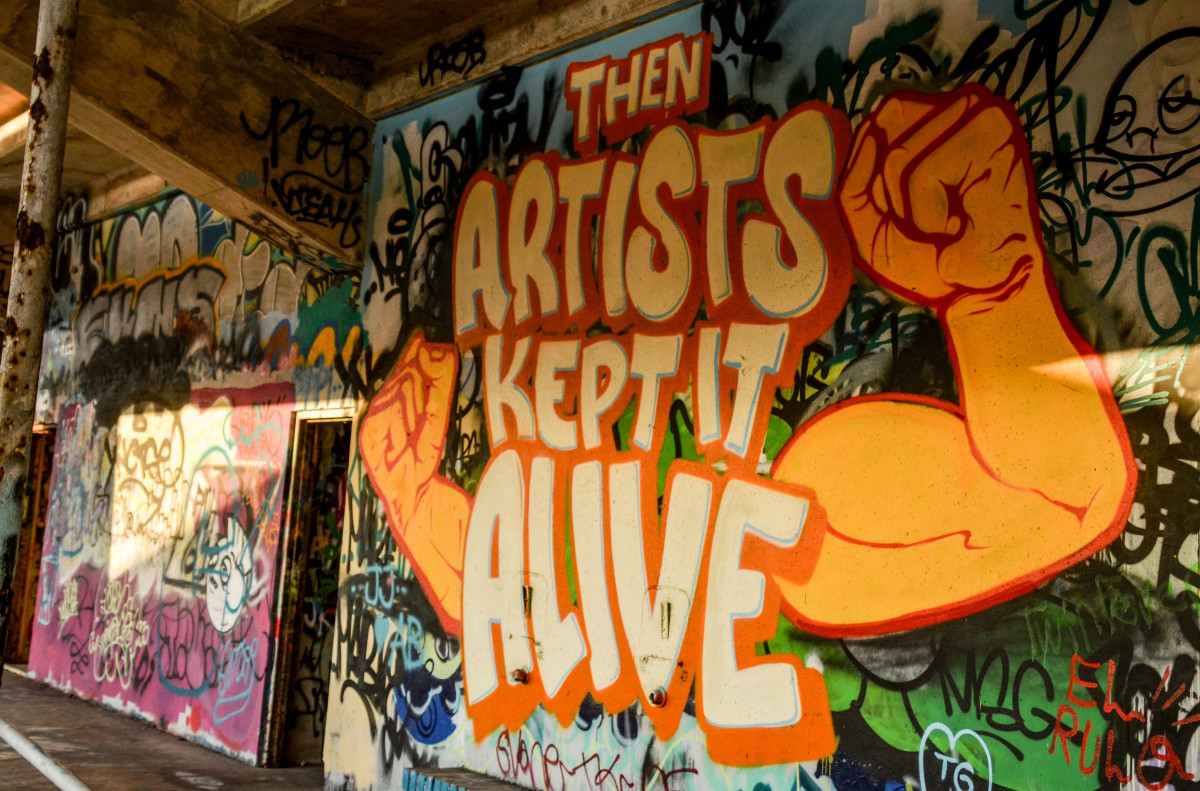Power Boats and Paint Cans: In Miami, a Relic of a Marina Finds New Life, Again
In vibrant 1960s Miami, no sporting venue witnessed as many high-speed chases and boat crashes, or hosted as many rowdy parties, as Miami Marine Stadium. Powerboats zoomed through the cerulean waters at breakneck speed, smashing into one another and spewing splintered wood across the sky. Racers catapulted into the air and slammed into the surf. The pungent stench of gasoline lingered in the humid air and the juddering hymn of engines reverberated off the concrete stands and cantilevered roof. If you were looking for a good time in Miami, a boat race checked all the boxes. And if you wanted a boat race, Miami Marine Stadium was your place.
Situated on the then mostly undeveloped Virginia Key, within paddling distance of an ever-changing metropolitan skyline, Miami Marine Stadium saw boat-racing spectators from around the region flood its doors in pursuit of high-speed thrills and the relaxation of a cool concrete canopy. Over the years, though, it became more than just a boat-racing venue. Jimmy Buffett, Mr. Florida himself, played from a floating stage, serenading fans, looking for a lost shaker of salt. Elvis Presley, through movie magic, filmed closeups in California for action that unfolded at Miami Marine Stadium, for his boating flick, Clambake. In 1972, at a waters-edge campaign rally, Sammy Davis Jr. introduced Richard Nixon as “the President and future President of the United States of America!” and then hugged POTUS. (It was a big moment for a leader not known for embracing the Black community.)
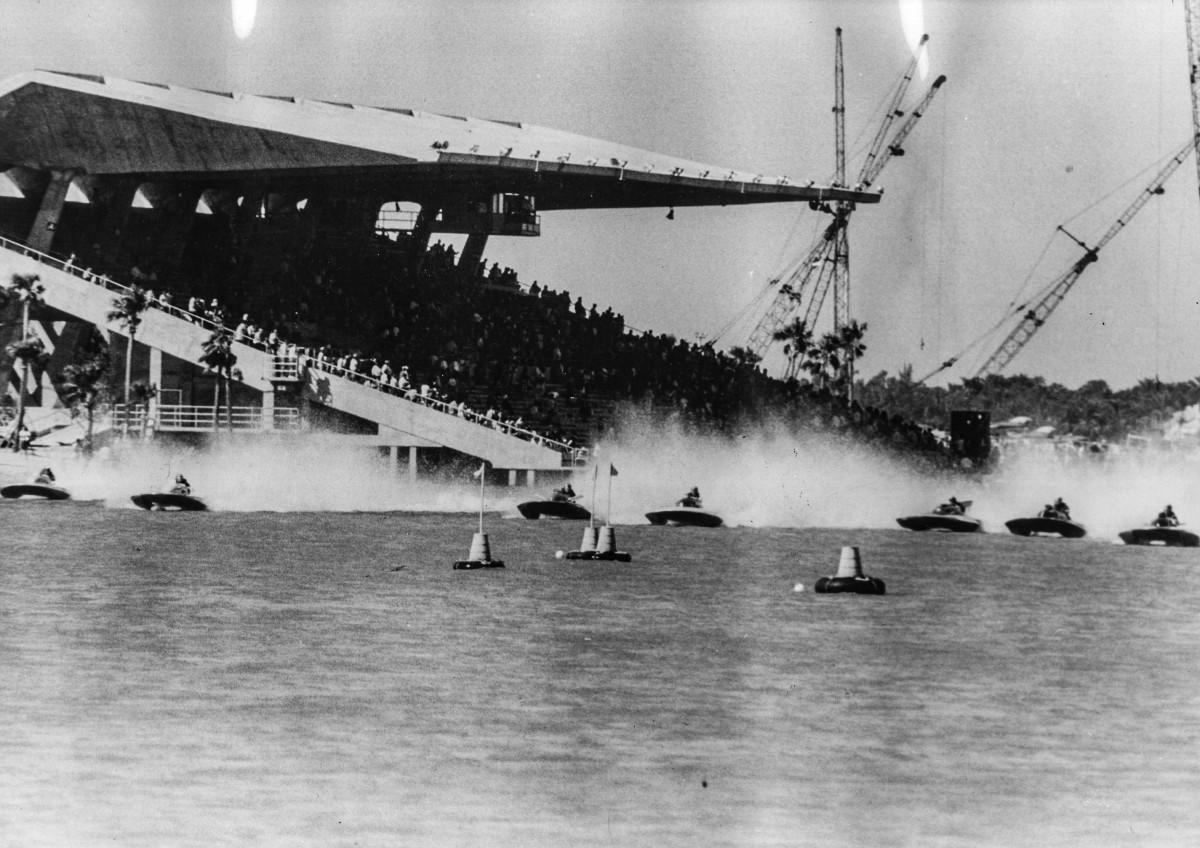
But power-boating events were the stadium’s Big Thing, and the venue hosted upward of 17 different boat classes, including unlimited hydroplanes. (Unlimiteds were the largest, named as such because you could do anything with their World War II–era aircraft engines.) Boats would zip through the stadium basin’s clear waters at speeds over 100 mph, dazzling fans in the hot Miami sun.
Eventually, though, the popularity of powerboat racing waned after its 1970s peak, due in part to the sport’s inherent dangers, and the emergence in Miami of other forms of sporting entertainment. And in the ensuing decades, Miami Marine Stadium booked fewer and fewer races, rock concerts and rallies. A battering by Hurricane Andrew in 1992 seemed like the final nail in the concrete coffin. The city of Miami eventually deemed the venue structurally unsound, and for years the stadium sat empty. If anyone cared about the place, it was only out of fear that it would become yet another high-rise condo unit.
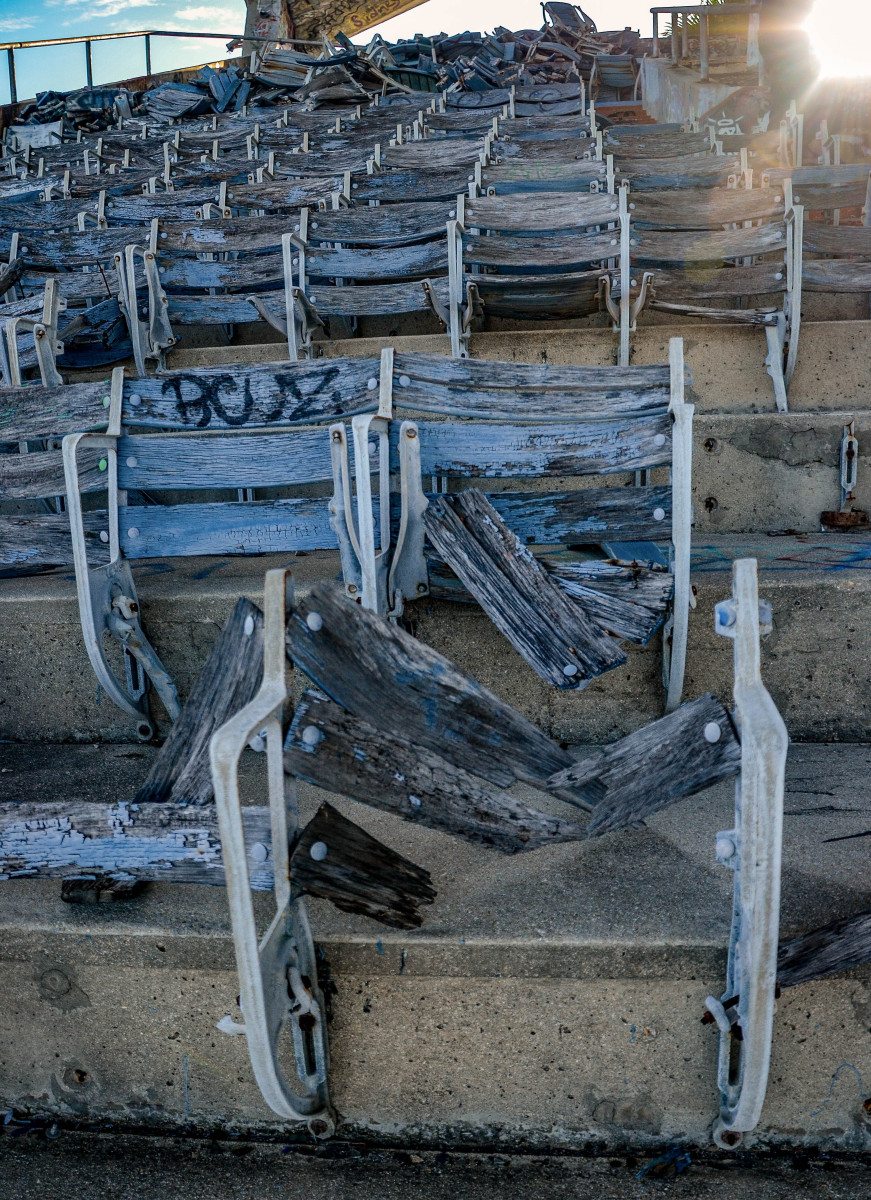
Today, stacks of splintered wooden chairs sit piled on top of one another. Feral cats prowl the lower stands, wary of loose floorboards that open to the sea. Empty spray-paint canisters and debris line the damp interior concession area. Tags, left over the years by trespassing street artists, declare to the rare visitor: HAPPY 30TH ARIEL! ... LIZ <3 CP ... BLACK LIVES MATTER.
And therein lies the beauty. Miami Marine Stadium may sit lonely and abandoned, but it is as vibrant as ever, coated in layer after layer of graffiti, sprayed with passion and love and anger across every inch of its surface.
A massive deadbolt lock keeps unwelcome visitors from entering without permission from the city of Miami. On a sunny day in February, one of the handful of people with such permission entered and slowly made his way to the top of the stadium’s last row. He looked out over the pristine waters of Biscayne Bay, at rows of white hotel high-rises and high-end developments, at palm trees and speedboats cutting through the water. Hilario Candela knows everything there is to know about the place. In 1963, when he was a 27-year-old architect, he designed the stadium himself.
Directly overhead, the world’s largest cantilevered slab of concrete shades the now 86-year-old Cuban immigrant from a powerful winter sun. The massive roof, the pièce de résistance of the stadium’s distinctive design, seems to float over the stands as Candela ticks off its details: 326 feet long ... constructed with wooden molds, like the ones found in ship-building... . Across 60 years, Candela has seen this space in varying degrees of life. First, an empty plot of land that he drove past on his morning commute from Biscayne Bay to Miami. Then a massive wood-and-concrete construction project. An iconic entertainment venue. And finally, in its current state: empty, spray-painted, as beautiful as ever.
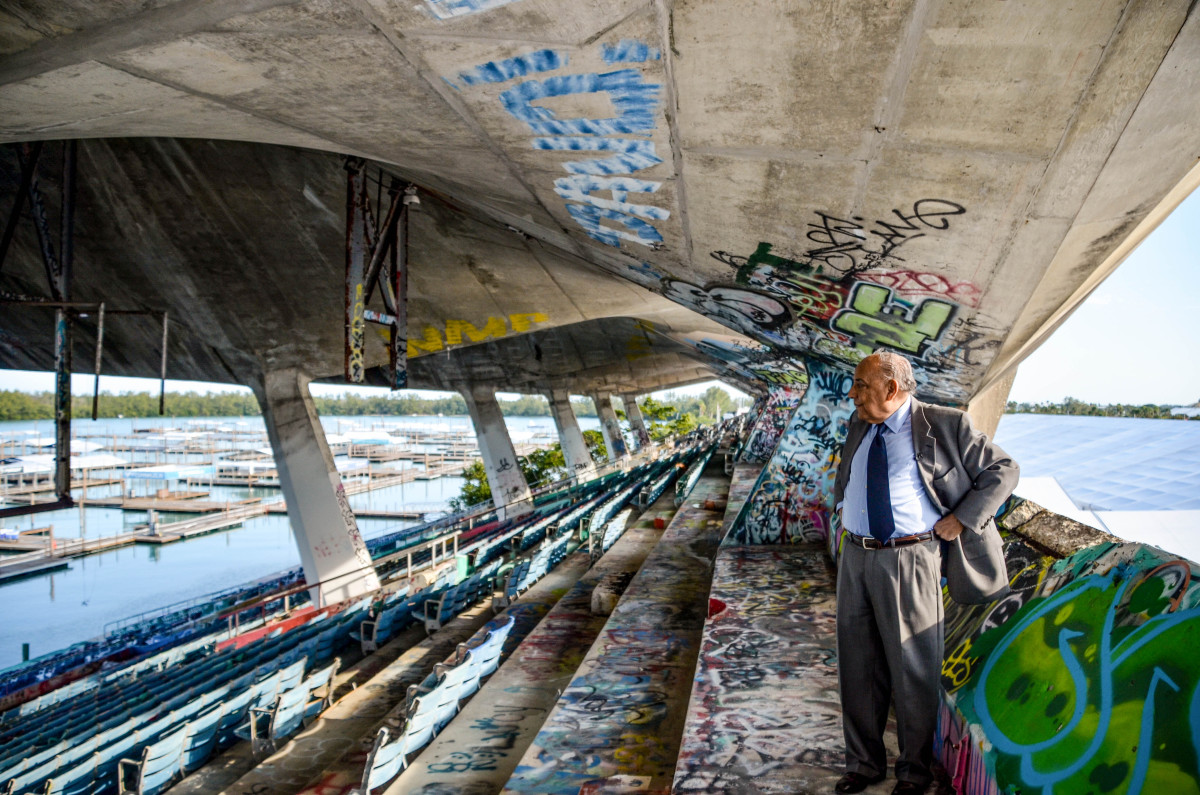
Candela still gushes over the stadium’s design, and the fact that he was able to deliver such a unique marvel under the city’s $1 million budget. He remains proud of that roof, and the fact that—through hurricanes and abandonment—the stadium remains, according to an independent engineering firm, structurally sound. Walking through the place, he says, is like “having a wonderful conversation that never ends. My conversation started in 1963, when we finished, and it hasn't finished yet.”
Candela has ambitious visions for the stadium’s future. Though abandoned for decades, a group of local Miamians has fought to restore the venue and reimagine it as a multi-purpose outdoor venue. In 2009, that group hired an engineering firm, whose team found that the building was in better shape than two other study sites: the Rose Bowl and Notre Dame Stadium. In another major victory, the National Register for Historic Places recognized the stadium and its basin as a historically significant site. Over the next several months, after years of work by local activists, including Candela, the city of Miami will now settle on a contractor and an operator for the reimagined stadium.
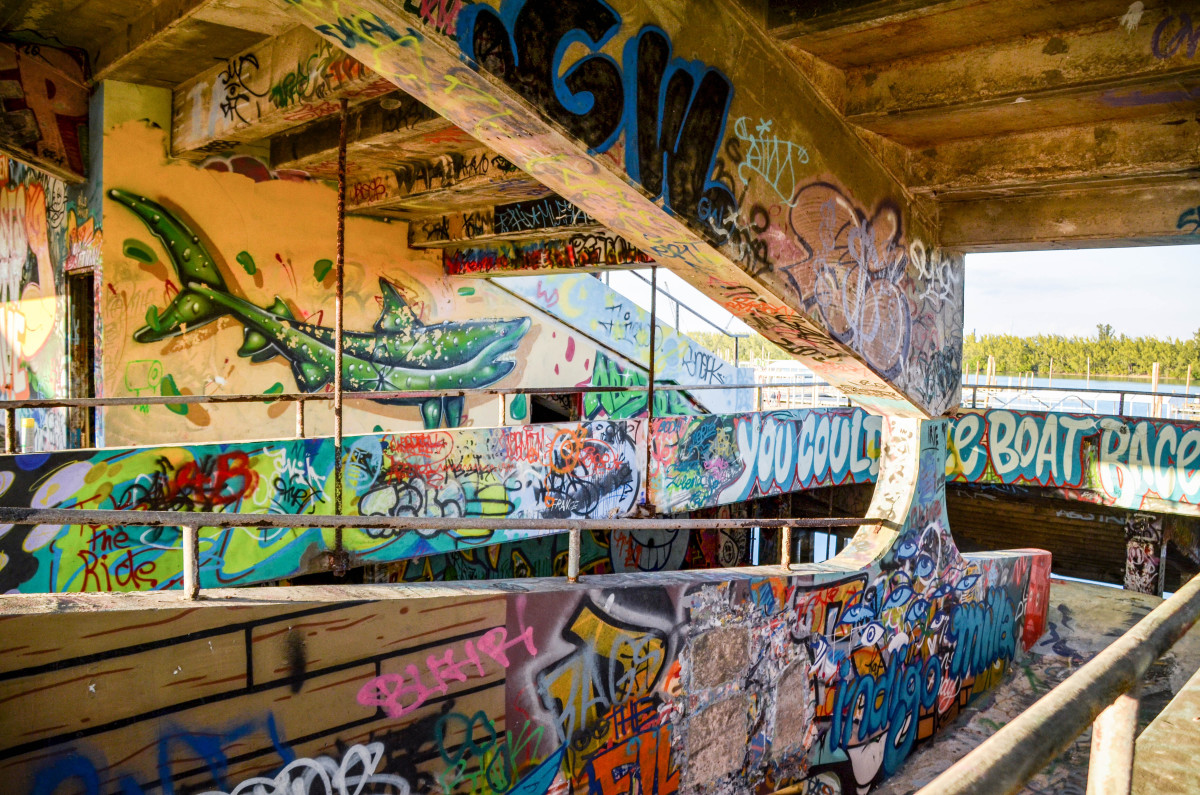
Among the stadium’s potential saviors: Don Worth, a South Beach resident who for almost 20 years has passionately pleaded the case for survival, along the way accumulating binder after binder of documents and photos, all to help him stay organized for the 100-odd presentations he’s done for city officials, national trust boards and reporters. Over a seafood lunch at the Rusty Pelican, at the mouth of the Miami Marine Stadium basin on Virginia Key, Worth wells up a bit. “Twelve years of tremendous ups and devastating downs,” he calls the effort to revive the space.
Worth has spent much of his retirement becoming a Marine Stadium expert and, though he never visited in its heyday, he, like many Miamians, feels a special connection to the space and its potential for the community. “You know, this area is considered hallowed ground,” he says, pointing toward the basin. “Five boat racers died here. Somebody died here on opening night.”
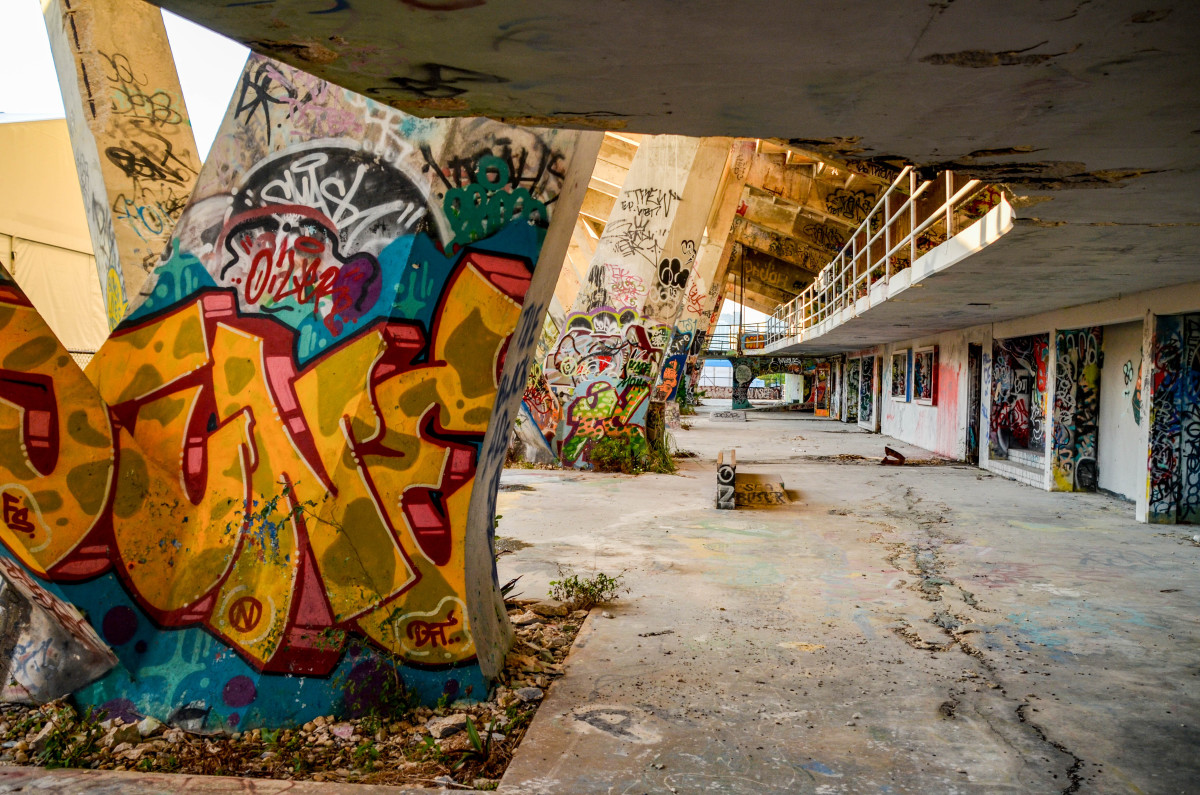
Worth sees the stadium as an important access point for Miamians to the ocean that surrounds them but that isn’t always accessible. “It's great if you're wealthy and live in a nice house [near the water], or in a five-star hotel or a condo, or belong to a yacht club," he says. "But Miami's best asset is the water, and we need to get people the opportunity to experience the water, not build out every square inch [of beachfront].”
Candela agrees: “Miami, you think of water. However, we're not open enough to the water. We see the water when we go across the causeway ... maybe in a few restaurants. … In a place like the stadium, you really could get your feet wet.”
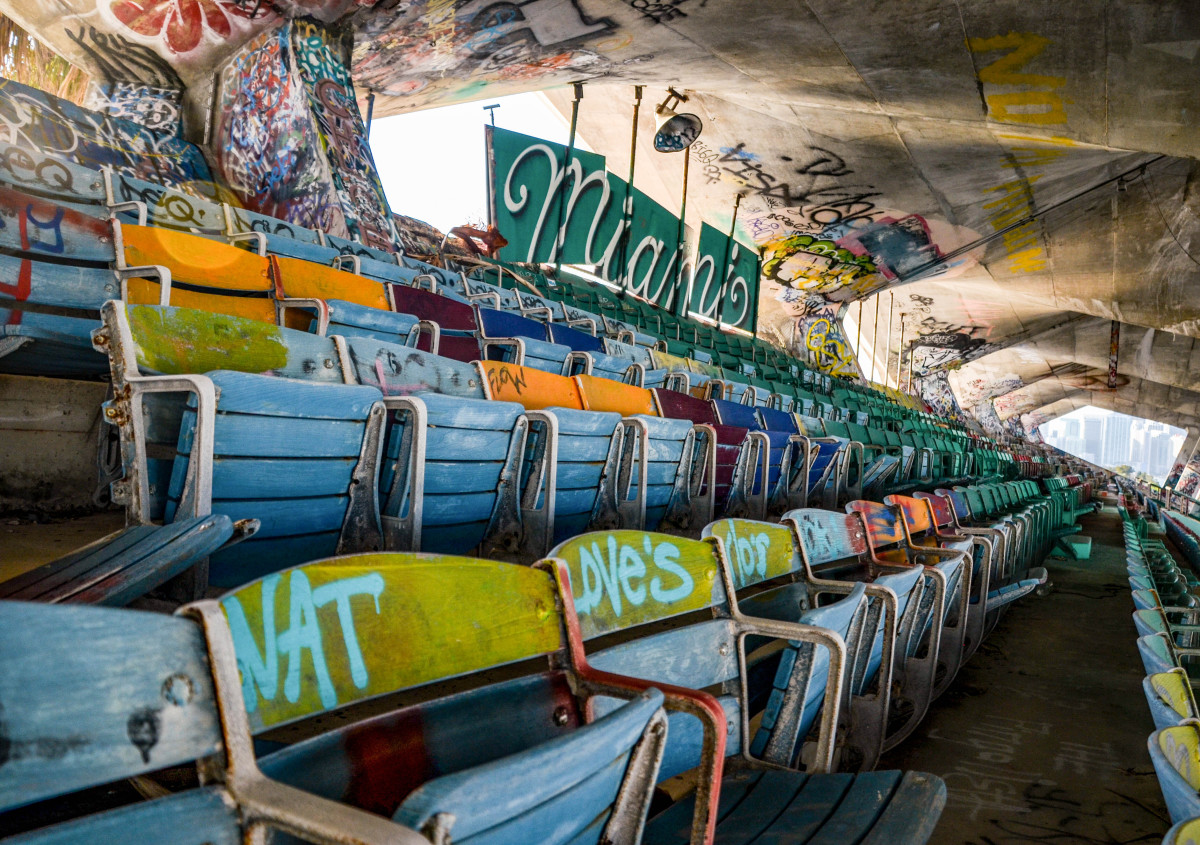
A bulldozing of the stadium seems to have been avoided, but a smaller degree of devastation seems certain. The graffiti that has brought Miami Marine Stadium to the attention of a new generation—on message boards, and among daring photographers and urban explorers—will disappear once renovations finally begin. The layers of paint present a structural hazard to the concrete, according to engineers who have studied the stadium. Thus, the saving of Miami Marine Stadium will inevitably change it, too. Gone will be the story, spray-painted across multiple walls, that starts, “Hurricane Andrew closed it ...” On another wall, alongside an image of flexed arms: “... then artists kept it alive.”
Whatever the cost, Candela hopes that in a couple of years he can stand at the grand reopening of a reimagined structure that belongs to all Miamians. Barely a decade ago, the stadium was included on a list, put out by the National Trust for Historic Preservation, of 11 endangered places. And now? Says Candela: “Miami Marine Stadium is part of the framework of the social changes in our community, our society.”
